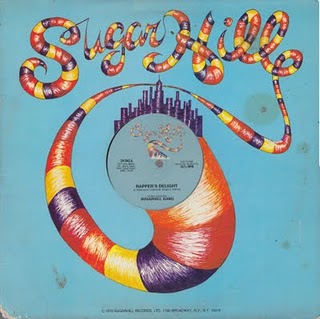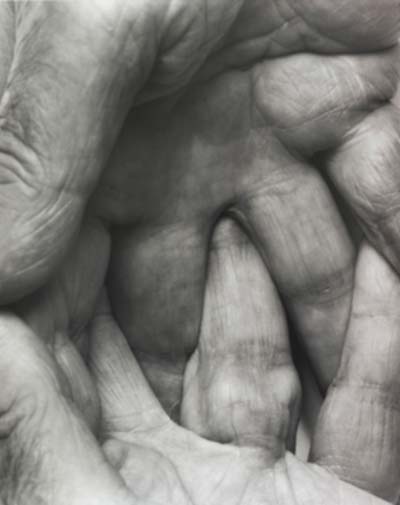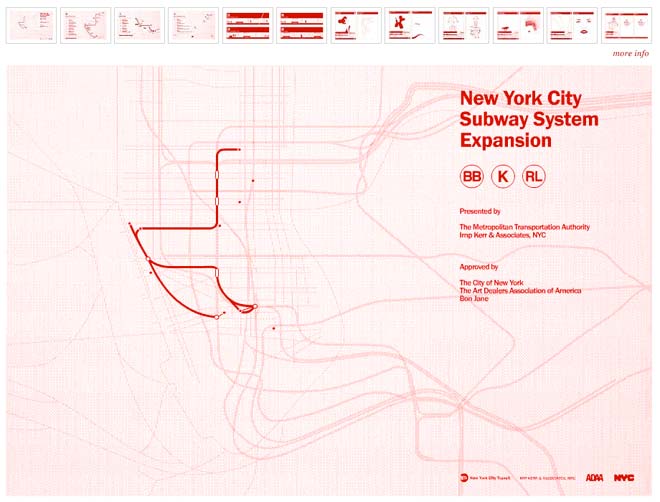within the world

Alvin Roth spent years writing academic papers about the medical job market — specifically, picking apart the national system that matched young doctors to their first hospital jobs out of medical school. (…)
When it was introduced in the 1950s, the National Resident Matching Program was supposed to help doctors with the stressful and chaotic problem of finding their hospital internships. But after four decades, it was showing its age. Some medical students complained that the process was unfair, and that hospitals were being given too much power in determining where new doctors would live and work. Above all, the system was faltering because it was designed at a time when virtually no women became doctors, which meant it couldn’t handle married couples applying simultaneously. The result was that young doctors were passing up job opportunities for family reasons, and in some cases husbands and wives were assigned to distant cities and asked to choose their careers over each other.
As a professor who specialized in game theory, Roth had been studying medical matching programs closely since the early 1980s, figuring out what worked and what didn’t, and what rules were required to make a system in which everyone — the hospitals, the doctors — ended up happiest. He had coauthored a book full of theories and equations related to the problem of matching in general. He was so well known for this, one colleague remembers, that medical students would call him every year for advice on how to game the system. (…)
Roth has emerged as a rare figure in the academic world: a theorist willing to dive into real-world problems and fix them. After helping the med students, he designed a better way to assign children to public schools — the system now used by both Boston and New York. He also helped invent a system for matching kidney donors with patients, dramatically increasing the number of donations that take place each year.
{ The Boston Globe | Continue reading }
U.S., economics, health, ideas | April 6th, 2011 5:30 pm

{ Fukushima Fallout Reaches San Francisco. Small amounts of radioactive material have turned up in rainwater in the Bay Area, say nuclear scientists. | The Physics arXiv Blog | full story | Read more: The Bulletin of the Atomic Scientists | Fukushima in focus: collection of coverage }
artwork { Ruel Pascual }
U.S., asia, incidents, uh oh | April 4th, 2011 4:35 pm

{ Map: A modern redrawing of the 1807 version of the Commissioner’s Grid plan for Manhattan, a few years before it was adopted in 1811. Central Park is absent. | Two hundred years ago on Tuesday, the city’s street commissioners certified the no-frills street matrix that heralded New York’s transformation into the City of Angles — the rigid 90-degree grid that spurred unprecedented development, gave birth to vehicular gridlock and defiant jaywalking. Today, debate endures about the grid, which mapped out 11 major avenues and 155 crosstown streets along which modern Manhattan would rise. | NY Times | full story | Interactive map: How Manhattan’s Grid Grew }
related { New York didn’t invent the apartment. Shopkeepers in ancient Rome lived above the store, Chinese clans crowded into multistory circular tulou, and sixteenth-century Yemenites lived in the mud-brick skyscrapers of Shibam. But New York re-invented the apartment many times over, developing the airborne slice of real estate into a symbol of exquisite urbanity. Sure, we still have our brownstones and our townhouses, but in the popular imagination today’s New Yorker occupies a glassed-in aerie, a shared walk-up, a rambling prewar with walls thickened by layers of paint, or a pristine white loft. | NY mag | full story }
new york | April 4th, 2011 4:02 pm

{ $1,700: The annual benefit the average American derives from personal computers. | WSJ | full story }
U.S., economics, technology | April 4th, 2011 3:04 pm

The upper 1 percent of Americans are now taking in nearly a quarter of the nation’s income every year. In terms of wealth rather than income, the top 1 percent control 40 percent. Their lot in life has improved considerably. Twenty-five years ago, the corresponding figures were 12 percent and 33 percent. One response might be to celebrate the ingenuity and drive that brought good fortune to these people, and to contend that a rising tide lifts all boats. That response would be misguided. While the top 1 percent have seen their incomes rise 18 percent over the past decade, those in the middle have actually seen their incomes fall. For men with only high-school degrees, the decline has been precipitous—12 percent in the last quarter-century alone. All the growth in recent decades—and more—has gone to those at the top. In terms of income equality, America lags behind any country in the old, ossified Europe that President George W. Bush used to deride. Among our closest counterparts are Russia with its oligarchs and Iran.
{ Vanity Fair | Continue reading }
photo { Keith Arnatt }
U.S., economics | April 2nd, 2011 1:45 pm

A venomous Egyptian cobra went missing from New York’s Bronx Zoo, prompting the closure of the zoo’s reptile house until further notice. (…)
The Egyptian cobra is most commonly found in North Africa. Its venom is so deadly that it can kill a full-grown elephant in three hours — or a person in about 15 minutes, according to wildlife experts. The venom destroys nerve tissue and causes paralysis and death due to respiratory failure.
{ CNN | Continue reading }
new york, reptiles, uh oh | March 28th, 2011 5:00 pm

A study using census data from nine countries shows that religion there is set for extinction, say researchers.
The study found a steady rise in those claiming no religious affiliation.
The team’s mathematical model attempts to account for the interplay between the number of religious respondents and the social motives behind being one.
The result, reported at the American Physical Society meeting in Dallas, US, indicates that religion will all but die out altogether in those countries.
The team took census data stretching back as far as a century from countries in which the census queried religious affiliation: Australia, Austria, Canada, the Czech Republic, Finland, Ireland, the Netherlands, New Zealand and Switzerland.
{ BBC | Continue reading }
ideas, within the world | March 23rd, 2011 4:43 pm

Even if Japan’s nuclear crisis is contained, its earthquake and tsunami now seem certain to be, economically speaking, among the worst natural disasters in history, with total losses potentially as high as two hundred billion dollars. In response, fearful investors sent the Nikkei down almost twenty per cent on the first day of trading after the tsunami, and it’s still down more than ten per cent. Yet, while the fear is understandable, this may turn out to have been an overreaction: history suggests that, despite the terrifying destruction and the horrific human toll, the long-term impact of the quake on the Japanese economy could be surprisingly small.
{ New Yorker | Continue reading }
asia, economics, incidents | March 21st, 2011 3:50 pm

In late 1979, Debbie Harry suggested that Nile Rodgers join her and Chris Stein at a Hip hop event in a communal space taken over by young kids and teenagers with boom box stereos, who would play various pieces of music to which performers would break dance. The main piece of music they would use was the break section of “Good Times.”
A few weeks later, Blondie, The Clash and Chic were playing a gig in New York at Bonds nightclub. When Chic started playing “Good Times,” rapper Fab Five Freddy and members of the Sugarhill Gang jumped up on stage and started freestyling with the band; Rodgers allowed them to “do their improvisation thing like poets, much like I would play guitar with Prince.”
A few weeks later Rodgers was on the dance floor of New York club LaViticus and suddenly heard the DJ play a song which opened with Edwards bass line from “Good Times”. Rogers approached the DJ who said he was playing a record he had just bought that day in Harlem. The song turned out to be an early version of “Rapper’s Delight” by The Sugarhill Gang, which Rogers noted also included a scratched version of the song’s string section. Rogers and Edwards threatened The Sugarhill Gang with legal action, which resulted in them being credited as co-writers on “Rappers Delight”.
{ Wikipedia | Continue reading }
celebs, flashback, music, new york | March 21st, 2011 11:25 am

The Federal Reserve has blessed the balance sheet of Goldman Sachs — paving the way for the investment bank to pay back the $5 billion investment that Warren Buffett made at the height of the financial crisis in 2008. (…)
In the darkest days of the financial crisis, Mr. Buffett agreed to invest $5 billion in Goldman Sachs, whose stock was suffering amid a general liquidity scare. The deal in September 2008 came at a hefty price, namely a 10 percent annual dividend that amounted to about $500 million.
At the time, Mr. Buffett also picked up warrants, giving Berkshire the right to buy $5 billion of stock with a strike price of $115. With Goldman stock currently trading at $160, Buffett’s profit on the warrants is around $2 billion.
{ NY Times | Continue reading }
For the first time, researchers prompted the very rich—people with fortunes in excess of $25 million—to speak candidly about their lives. The result is a suprising litany of anxieties: their sense of isolation, their worries about work and love, and most of all, their fears for their children.
{ The Atlantic | Continue reading }
photo { John Coplans }
U.S., economics | March 18th, 2011 3:45 pm

The Prime Minister of Japan recently stated that his nation was facing its worst crisis since World War II. While most of the world is focused on tragic images of floodwater and rubble, and fixated on radiation levels, there is a bigger picture to be examined – one that also includes energy, coal and the Strait of Hormuz.
The geography of the Persian Gulf is extraordinary. It is a narrow body of water opening into a narrow channel through the Strait of Hormuz. Any diminution of the flow from any source in the region, let alone the complete closure of the Strait of Hormuz, would have profound implications for the global economy.
For Japan it could mean more than higher prices. It could mean being unable to secure the amount of oil needed at any price. The movement of tankers, the limits on port facilities and long-term contracts that commit oil to other places could make it impossible for Japan to physically secure the oil it needs to run its industrial plant. On an extended basis, this would draw down reserves and constrain Japan’s economy dramatically. And, obviously, when the world’s third-largest industrial plant drastically slows, the impact on the global supply chain is both dramatic and complex.
{ George Friedman | Continue reading }
Nuclear plants in France, Germany, and the U.S. are far more automated than in Japan, where more controls are based on manual decisions, switches, and reactions, says Roger Gale, a nuclear industry consultant and former official at the U.S. Department of Energy who served as a consultant to Tepco for 20 years. He thinks U.S. utilities would have acted more quickly in a similar disaster. “[Tepco] probably reacted more slowly in the initial case than they needed to.”
Gale says a culture of complacency within Tepco may also have contributed to the crisis. Tepco has massive cash flows and a reputation for hiring the best and brightest engineers in Japan. However, Gale says, an array of management problems–a lack of transparency, problems with record keeping, relying on manual rather than automatic controls, and being slow on the draw when making decisions—plague the organization.
{ Fast Company | Continue reading }
At this point in the Japanese nuclear emergency it is coming down to the simple proposition of how do you drop enough water on the stricken reactors, and especially the spent fuel ponds, to keep further damage from happening?
{ Robert X. Cringely | Continue reading | And: Japan Takes Extraordinary Measures to Cool Nuclear Plant }
related { CNN/Money jumps on the fear bandwagon with this interactive graphic }
asia, economics, oil, uh oh | March 18th, 2011 10:40 am
haha, new york | March 18th, 2011 10:36 am

Disaster and rebirth is an old story in this part of the country. I know. My family has lived that cycle for generations deep in the Mississippi Delta—in Plaquemines Parish, a name that since the British Petroleum (BP) oil spill has become a cultural marker, the equal, after Katrina, of “the Lower Ninth Ward.” But the oil spill? Will it prove one too many disasters for the return of the Plaquemines Parish my family once knew? Or will it, like Hurricane Katrina, be a dangerous opportunity for changes long overdue?
As much of America suddenly knows, the mouth of the Mississippi River and the surrounding marshlands of Plaquemines Parish nurture the foodstuffs that grace the tables of New Orleans’s world-famous restaurants and provide much of the seafood—25 to 30 percent of it—that Americans eat. Over two centuries the region’s diverse, amphibious Delta culture—Alsatian, Croatian, Isleño, African American, Italian, and Native American—also nurtured my family’s culinary roots that flowered into the Ruth’s Chris Steak House restaurant empire.
{ Randy Fertel/Gastronomica | Continue reading }
photo { Jessica Craig-Martin }
U.S., economics, food, drinks, restaurants, oil | March 18th, 2011 10:35 am

The US military is developing software that will let it secretly manipulate social media sites such as Facebook and Twitter by using fake online personas to influence internet conversations and spread pro-American propaganda.
A Californian corporation has been awarded a contract with United States Central Command (Centcom), which oversees US armed operations in the Middle East and Central Asia, to develop what is described as an “online persona management service” that will allow one US serviceman or woman to control up to 10 separate identities based all over the world.
{ Guardian | Continue reading }
painting { Jean Leon Gerome }
U.S., social networks | March 17th, 2011 4:40 pm

Three new lines will be added to the New York City subway system next fall, giving residents of Chelsea and the Meatpacking District direct transit service down to Soho and up to the Upper East Side.
Plans call for two rapid transit subway lines and one ultra-slow line: The BB, the K, and the RL–which respectively stand for Boone Boone, Koons, and Roy Lichtenstein. The three lines are expected to open October 15, 2011 in unison.
M.T.A. awarded the construction contract to Manhattan-based company Imp Kerr & Associates, NYC. Other projects the firm currently works on include the eradication of Science Limited, the maintenance of a jellyfish farm, and private lectures on Spinoza. Imp Kerr will serve as executive supervisor.
{ Text | Images and maps }
new york, transportation | March 17th, 2011 4:28 pm

At 2:27 p.m. on March 30, 1981, President Ronald Reagan (Secret Service code name: Rawhide) walked out of a Washington hotel and was shot by John Hinckley Jr. In the confused moments that followed, no one was sure exactly what had happened—or if Mr. Reagan had even been hurt. In this excerpt from the forthcoming book “Rawhide Down,” a detailed account of the attempted assassination, Secret Service agent Jerry Parr has just shoved Mr. Reagan into his car after hearing the gunshots.
{ Del Quentin Wilber/WSJ | Continue reading | More }
U.S., books, flashback, guns, incidents | March 17th, 2011 1:00 pm
asia, elements, horror, science | March 11th, 2011 5:15 pm

{ We’re in Siberia, shivering. It’s November, November 11, 2003, and two boys, Kolya and Maksim Muravyev, are ice fishing along the Lena River, where it’s 13 below zero. All of a sudden, up in the sky, they see what looks like a flamingo. | NPR | Continue reading }
animals, within the world | March 7th, 2011 6:28 pm

Among the findings of a sweeping federal government survey of American sexual behavior is one that may surprise those bewailing a permissive and eros-soaked popular culture: More than one-quarter of people interviewed in their late teens and early 20s had never had sex. (…)
The uptick in abstinence is one of many revealing facts arising from structured interviews with a random sample of 13,495 Americans, ages 15 to 44, that were done from 2006 to 2008. The findings provide evidence for almost every theory and supposition about the nation’s secret sex life.
The survey results, released Thursday, suggest that oral sex may be a gateway to vaginal sex but that for some teens it is a stopping point. Most adults are monogamous. About 4 in 10 adults have had anal sex. Women are more likely than men to have same-sex liaisons. Or at least are more comfortable talking about them.
{ Washington Post | Continue reading }
photo { Saul Leiter, Lanesville, 1958 }
U.S., sex-oriented | March 7th, 2011 6:15 pm

“The dinner went well. The guest of honor didn’t sneeze. We were lucky.”
This comment was heard after a dinner at the U.S. State Department, where senior administration officials hosted a dinner for a delegation beginning a week of high-level meetings. The guest that didn’t sneeze was the senior person, allergic to flowers. Even though there were flowers on the tables, there were no sneezes.
It wasn’t luck that the guest was comfortable. Research by the protocol staff had discovered the allergy and found flowers that wouldn’t cause a problem. Thanks to the staff’s work, no headlines appeared announcing that dinner at the Department of State made a visiting dignitary sick.
At first, reading this story seems to confirm the stereotype that protocol and the work of protocol officers is simply about flowers, menus and seating plans. But to focus on those tasks is to miss the purpose that drives these activities. Robert W. Frye, former Chief of Protocol (…) explained it clearly: “protocol is the art of creating a distraction-free environment that facilitates the complete and open exchange of information to resolve issues and build relationships in global business and international diplomacy.”
{ Public Diplomacy Magazine | Continue reading }
U.S., pipeline | March 3rd, 2011 8:00 pm






















